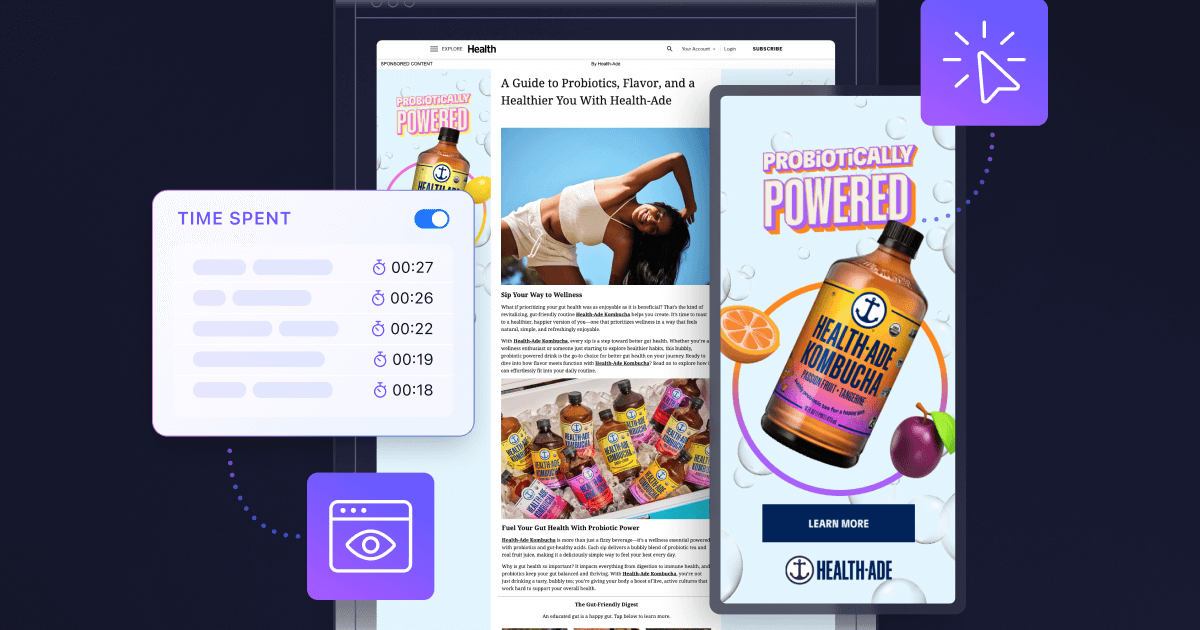Invisible Influence: How Native Advertising Works
.png)
Native advertising, a term that has gained prominence in the digital marketing landscape, refers to a form of advertising where the ad content is in harmony with the platform's regular content, both in style and function. This approach is designed to be less intrusive, blending seamlessly with a user's browsing experience. The effectiveness of native advertising lies in its subtlety and relevance, making it a powerful tool in the digital marketer's arsenal.
Understanding Native Advertising
Native advertising works by matching the visual design of the environment in which the ads are placed, and functions just like natural content. Unlike traditional ads, which are clearly distinguishable, native ads flow seamlessly within the user experience. This blending helps to capture the attention of users who are becoming increasingly adept at ignoring blatant advertising.
An example of native advertising can be found in sponsored articles on news websites. These articles are written in the same style as other articles on the site, but they promote a specific product or service. Similarly, social media platforms like Instagram and Facebook display sponsored posts that look like regular posts from friends or accounts a user follows.
The Key Elements of Native Advertising
- Seamless Integration: The core of native advertising lies in its ability to integrate with the platform's content. This seamless integration ensures that the ads do not disrupt the user experience but add value to it.
- Content Relevance: Native ads are often more effective when they are relevant to the audience. Understanding the target audience and creating content that resonates with them is crucial.
- Subtlety: Unlike traditional advertisements, native ads are subtle. They don't scream for attention but rather invite engagement through relevance and quality content.
- Platform-specific Design: Each platform has its unique style and format. Native ads are designed around these characteristics, requiring them to be tailored to each individual platform.
The Process of Native Advertising
The creation and implementation of native advertising involve several steps:
- Understanding the Platform: Before creating a native ad, it's essential to understand the platform's format, style, and audience. Each platform, whether it's a social media site, a news portal, or a blog, has its unique characteristics.
- Content Creation: The content of the ad needs to be crafted with the platform's style in mind. It should be engaging, informative, and relevant to the audience.
- Targeting the Right Audience: The success of native advertising relies heavily on reaching the right audience. Advanced targeting techniques are used to ensure that the ad reaches individuals who are most likely to find the content relevant and engaging.
- Measuring Success: The effectiveness of native advertising is measured through metrics such as engagement rate, click-through rate, and conversion rate. By understanding how well the ad resonated with the audience, adjustments can be made to improve results.
Advantages of Native Advertising
- Higher Engagement Rates: Since native ads blend in with the content and are less intrusive, they often see higher engagement rates compared to traditional ads.
- Builds Trust and Credibility: By providing valuable content in a non-disruptive way, native ads can help build trust and credibility with the audience.
- Bypasses Ad Fatigue: As consumers become increasingly resistant to traditional forms of advertising, native advertising offers a fresh approach that is less likely to be ignored.
- Enhanced User Experience: Native ads contribute to a better user experience by providing relevant and interesting content without interrupting the natural flow of content consumption.
Challenges and Considerations
While native advertising offers many benefits, there are challenges and ethical considerations to keep in mind:
- Disclosure: Transparency is crucial in native advertising. Consumers should be able to distinguish between paid content and organic content. Most platforms require native ads to be labeled as sponsored or promoted.
- Content Quality: The success of a native ad depends heavily on the quality of its content. Poorly crafted content can damage the credibility of both the advertiser and the platform.
- Balancing Act: Striking the right balance between advertising and providing value is critical. Overly promotional content can turn off users.
Conclusion
Native advertising represents a shift in the advertising paradigm, focusing on user experience and content relevance. By blending advertising with content in a non-intrusive manner, it offers a powerful way for brands to connect with their audience. However, the success of native advertising hinges on understanding the platform, creating quality content, and maintaining transparency. As the digital landscape continues to evolve, native advertising will likely play an increasingly significant role in marketing strategies.
Native advertising is more than just a trend; it's a reflection of the evolving relationship between advertisers, platforms, and consumers in the digital age. When done effectively, it provides value to both consumers and advertisers, making it a unique and effective tool in the world of digital marketing.

.jpg)


